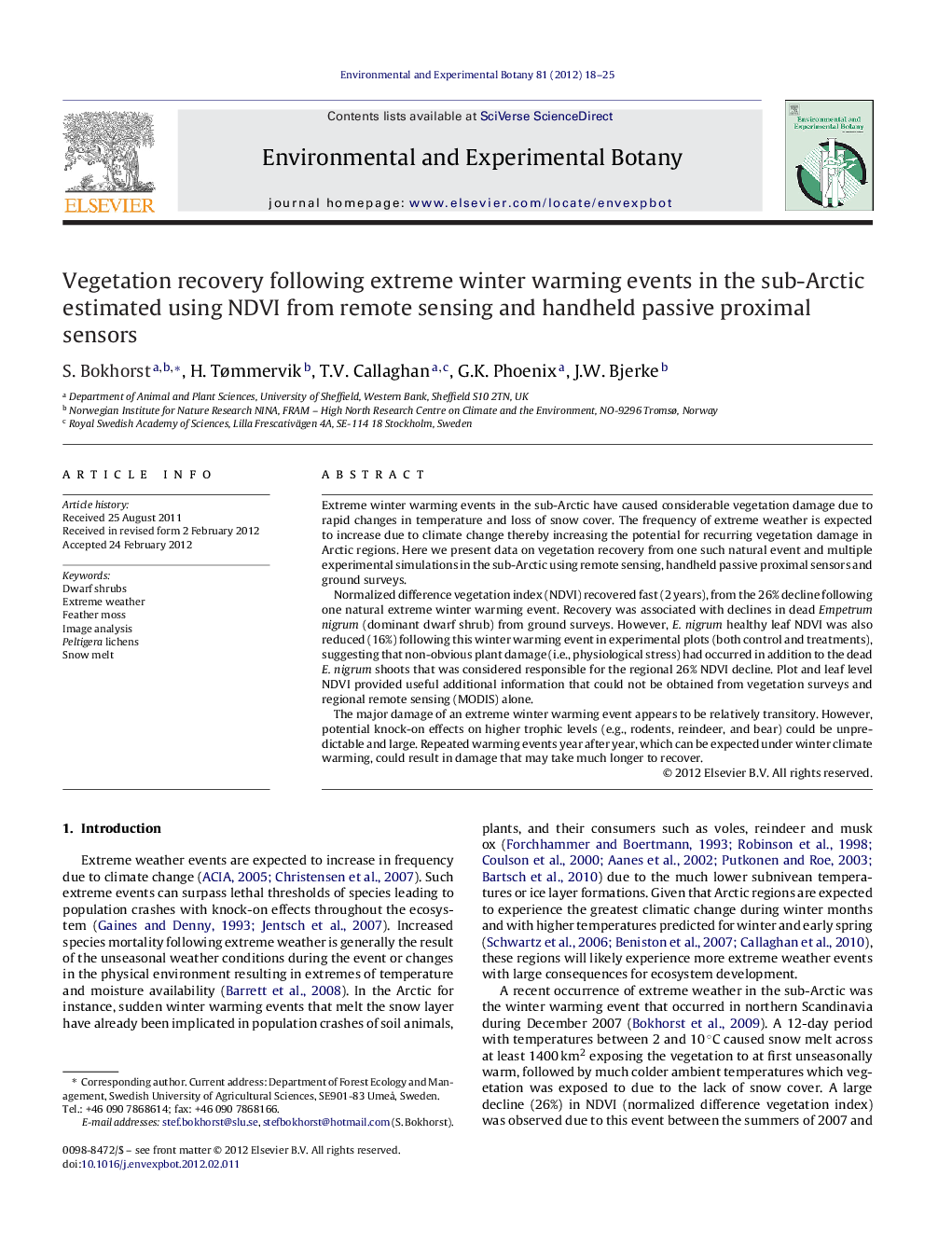| کد مقاله | کد نشریه | سال انتشار | مقاله انگلیسی | نسخه تمام متن |
|---|---|---|---|---|
| 4554640 | 1628096 | 2012 | 8 صفحه PDF | دانلود رایگان |

Extreme winter warming events in the sub-Arctic have caused considerable vegetation damage due to rapid changes in temperature and loss of snow cover. The frequency of extreme weather is expected to increase due to climate change thereby increasing the potential for recurring vegetation damage in Arctic regions. Here we present data on vegetation recovery from one such natural event and multiple experimental simulations in the sub-Arctic using remote sensing, handheld passive proximal sensors and ground surveys.Normalized difference vegetation index (NDVI) recovered fast (2 years), from the 26% decline following one natural extreme winter warming event. Recovery was associated with declines in dead Empetrum nigrum (dominant dwarf shrub) from ground surveys. However, E. nigrum healthy leaf NDVI was also reduced (16%) following this winter warming event in experimental plots (both control and treatments), suggesting that non-obvious plant damage (i.e., physiological stress) had occurred in addition to the dead E. nigrum shoots that was considered responsible for the regional 26% NDVI decline. Plot and leaf level NDVI provided useful additional information that could not be obtained from vegetation surveys and regional remote sensing (MODIS) alone.The major damage of an extreme winter warming event appears to be relatively transitory. However, potential knock-on effects on higher trophic levels (e.g., rodents, reindeer, and bear) could be unpredictable and large. Repeated warming events year after year, which can be expected under winter climate warming, could result in damage that may take much longer to recover.
► Extreme winter warming events cause considerable damage to sub-Arctic vegetation.
► 26% NDVI decline followed from a 10-day winter warming event in northern Scandinavia.
► Recovery of this vegetation damage took only 2 years.
► However, much vegetation damage remained following multiple experimental simulations.
► Repeated extreme events could push ecosystems beyond its stable state.
Journal: Environmental and Experimental Botany - Volume 81, September 2012, Pages 18–25